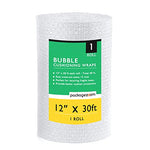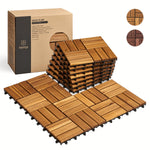You have no items in your shopping cart.
Are you tired of dealing with clogged drains and unpleasant odors in your bathroom? If so, it's time to pay attention to your bath waste system. Bath waste plays a crucial role in maintaining the cleanliness and functionality of your bathroom. In this comprehensive guide, we will explore everything you need to know about bath waste, from its definition to common issues and maintenance tips. So, let's dive in and unravel the secrets of an efficient bath waste system!
What is Bath Waste?
Before we delve deeper, let's start with the basics. Bath waste refers to the plumbing system that allows water to flow out of your bathtub, shower, or sink. It consists of various components, including pipes, traps, and drains, working together to remove wastewater and prevent clogs. Understanding the intricacies of bath waste is essential for preventing costly repairs and ensuring a hygienic bathroom environment.
Components of a Bath Waste System
To comprehend how bath waste works, let's take a closer look at its key components:
1. Bathtub/Shower Drain
The drain is the primary component responsible for removing water from your bathtub or shower. It typically consists of a strainer or grate to catch debris and a drain pipe that connects to the waste pipe.
2. Waste Pipe
The waste pipe carries water from the drain to the sewer or septic system. It is usually made of durable materials like PVC or cast iron to withstand constant water flow.
3. P-Trap
The P-trap is a curved section of pipe located beneath your sink or bathtub drain. It holds a small amount of water, forming a seal that prevents foul odors and sewer gases from entering your bathroom.
4. Vent Pipe
The vent pipe provides air circulation within the plumbing system, enabling smooth water flow and preventing suction or pressure issues. It helps maintain the balance between incoming and outgoing water.
Common Issues with Bath Waste
1. Clogged Drains
One of the most common problems associated with bath waste is clogged drains. Hair, soap scum, and other debris can accumulate over time, obstructing the flow of water. Regular cleaning and preventive measures can help minimize clogs.
2. Foul Odors
If you notice unpleasant smells in your bathroom, it could be a sign of an issue with your bath waste system. A dry P-trap or buildup of organic matter can cause foul odors. Running water regularly and cleaning the drains can mitigate this problem.
3. Leaks
Leaky pipes can lead to water damage and mold growth. Inspect your bath waste system for any signs of leaks, such as water stains or dampness. Prompt repairs are essential to prevent further damage.
4. Slow Draining
If your bathtub or sink takes longer than usual to drain, it could indicate a partial blockage in your bath waste system. Use a plunger or a drain snake to remove any obstructions and restore proper drainage.
5. Noisy Pipes
Do you hear strange noises when you run water down the drain? Noisy pipes may indicate issues such as loose fittings or insufficient ventilation. Consulting a professional plumber can help diagnose and resolve the problem.
Bath Waste Maintenance Tips
Maintaining a healthy bath waste system is vital for the overall functionality of your bathroom. Here are some maintenance tips to keep your bath waste system in optimal condition:
-
Regular Cleaning: Clean your drains periodically by removing hair, soap residue, and other debris. A mixture of baking soda and vinegar can be an effective natural cleaner.
-
Use Drain Screens: Install drain screens or strainers to catch hair and large debris before they enter the drain. This simple preventive measure can significantly reduce the likelihood of clogs.
-
Avoid Chemical Drain Cleaners: While tempting, chemical drain cleaners can damage your plumbing system over time. Opt for safer alternatives like enzymatic cleaners or call a professional plumber for stubborn clogs.
-
Be Mindful of What Goes Down the Drain: Avoid pouring grease, coffee grounds, or food scraps down the drain. These substances can solidify and cause blockages.
-
Regularly Check for Leaks: Inspect your bath waste system for leaks, including the P-trap and connections. Addressing leaks promptly can prevent extensive water damage.
-
Seek Professional Help: If you encounter persistent issues or require extensive repairs, don't hesitate to contact a licensed plumber. They have the expertise to diagnose and fix complex bath waste problems.
Frequently Asked Questions (FAQs)
Q1: How often should I clean my bath waste system?
A1: It is recommended to clean your bath waste system at least once every few months to prevent clogs and maintain proper functionality.
Q2: Can I use boiling water to clear a clogged drain?
A2: While boiling water can help break down minor clogs, it may not be effective for stubborn blockages. It's best to use a plunger or a drain snake for more stubborn clogs.
Q3: What should I do if I notice a foul smell from my drains?
A3: Pouring a mixture of baking soda and vinegar down the drain can help eliminate foul odors. Additionally, running hot water for a few minutes can flush out any potential buildup.
Q4: How do I know if my bath waste system has a leak?
A4: Look for signs of water stains, dampness, or mold growth around your bath waste system. Unusually high water bills can also indicate a hidden leak.
Q5: Can I replace bath waste components myself?
A5: While some minor repairs or replacements can be DIY projects, it is advisable to consult a professional plumber for complex tasks. They have the necessary skills and knowledge to ensure a proper and safe installation.
Q6: How can I prevent hair from clogging my drains?
A6: Using drain screens or hair catchers is an effective way to prevent hair from entering the drains. Simply clean the screens regularly to maintain their effectiveness.
Conclusion
Maintaining a well-functioning bath waste system is essential for a clean and hygienic bathroom. By understanding the components of your bath waste system, being aware of common issues, and following proper maintenance practices, you can minimize the chances of clogs, leaks, and foul odors. Regular cleaning and preventive measures go a long way in ensuring the longevity and efficiency of your bath waste system. Remember, when in doubt, always seek professional assistance to avoid further damage or costly repairs.








